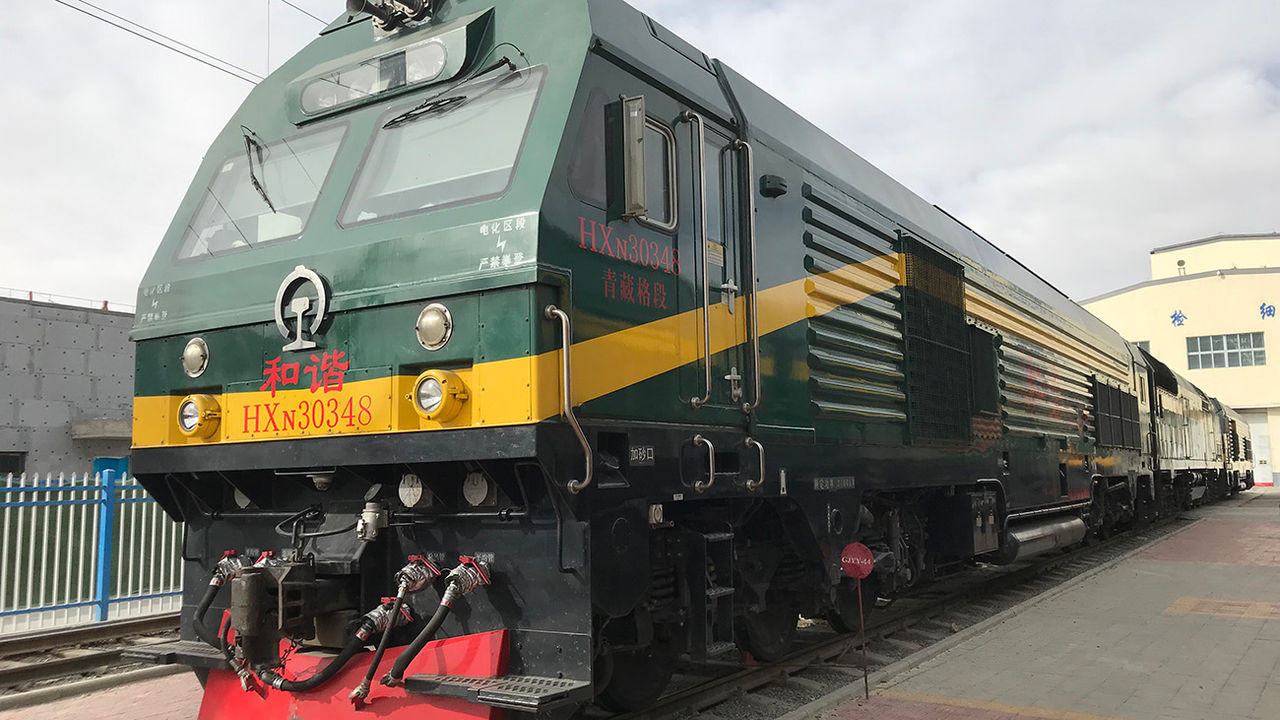At the heart of the Tibetan Plateau, the 1,142-km Golmud-Lhasa Railway is the first route to access the area, scaling an altitude varying from 2,800 meters to 5,100 meters, with more than 80% of the route at an altitude of over 4,000 meters. It runs through the Kunlunshan Tunnel and the Fenghuoshan Tunnel, both with altitudes above 4,600 meters, with daily temperatures varying by 40°C, and maximum wind speeds nearing 32.6m/s. The longest railway ever built at such a high altitude, locals have affectionately named it the “Sky Road”.
On the “Sky Road”, diesel locomotives, just like humans, may suffer from altitude stress due to the harsh plateau conditions, huge changes in daily temperatures, and extremely low oxygen levels: 50% of conditions at sea level. This results in insufficient air input into the cylinder and incomplete combustion in the engine. Consequently, the emissions, operational power, engine exhaust temperature, and fuel consumption could be expected to be much worse than those across the plain. Even worse, due to a high exhaust temperature, the possibility of engine and turbocharger failure is also much higher.
The railway’s operators have discovered it’s vital to use a turbocharger that demonstrates superior performance and continues to work well under the plateau’s conditions to resolve the problems of diesel locomotive operations at high altitudes.
 The HXN3 locomotive running ABB Turbocharging's TPR61-F turbocharger
The HXN3 locomotive running ABB Turbocharging's TPR61-F turbocharger
Currently, the main traction locomotives on the “Sky Road” are the HXN3 model made by CRRC Dalian. To enhance the performance of the locomotive under extremely low oxygen levels, CRRC Dalian worked with ABB to optimize its locomotives using the TPR61-F turbocharger, significantly increasing the air input into the diesel cylinder.
As a result, the diesel engine has improved its exhaust gas temperature performance and fuel consumption on the plateau. This not only reduces smoke emissions, but also enhances engine reliability and efficiency.
Enhancing locomotive operation efficiency on the plateau
ABB TPR serial turbochargers represent a new generation of products designed for both heavy long-haul and shunting locomotive applications, which are optimized from the structure and materials to their manufacturing process, and feature both a high pressure ratio and high turbocharging efficiency for an extended time between overhauls. Furthermore, their compact structure is particularly suitable for installation in tight spaces on many diesel locomotives.
In addition, the TPR61-F model designed for the HXN3 has an engine pressure ratio reaching 5.8 and a general efficiency of 65%. This means that its high pressure ratio and efficiency safeguards the total air input into the cylinder on the plateau, which remains close to that on the plain. As a result, combustion becomes more complete, effectively eliminating the effects of the plateau’s conditions on the diesel engine. According to actual data derived from the Tibetan Plateau railway operations, the locomotive equipped with the TPR61-F model has completely resolved the black-smoke issue, with a decline in the average exhaust gas temperature before turbine by over 40°C on average or 75°C at the peak, and field tests show that each return trip saves 140 litres of diesel.
Driving the development of China’s rail
Currently, there are over 3,500 TPR turbochargers in operation across the world, enabling heavy long-haul and shunting locomotive applications in various stringent load allocation and ambient conditions. One remarkable example is the HXN3B and HXN5B locomotives that haul the China-Europe Railway Express cargo trains, as they are installed with ABB TPR56FV turbochargers. By mid-2021, the Fuxing locomotive is expected to operate on the Lhasa-Linzhi Railway, which will adopt ABB TPR turbochargers.














